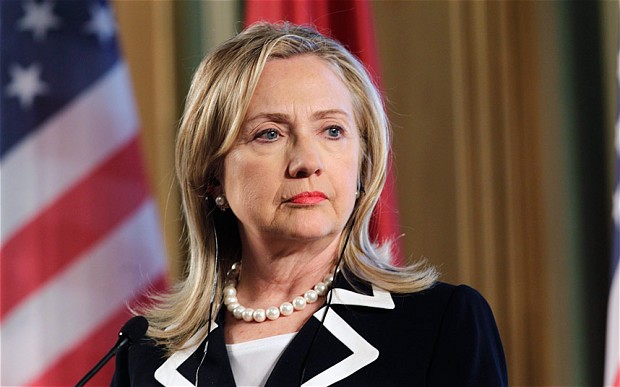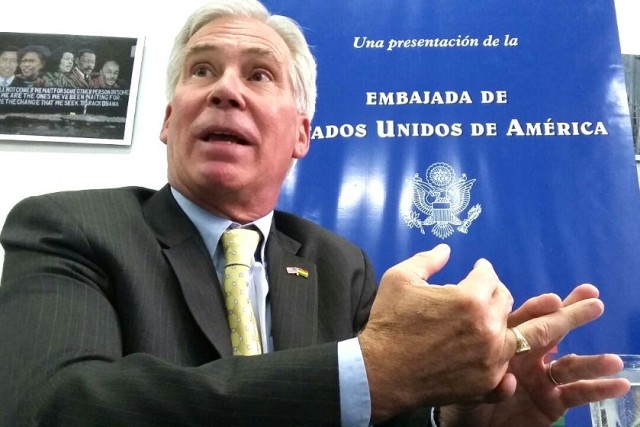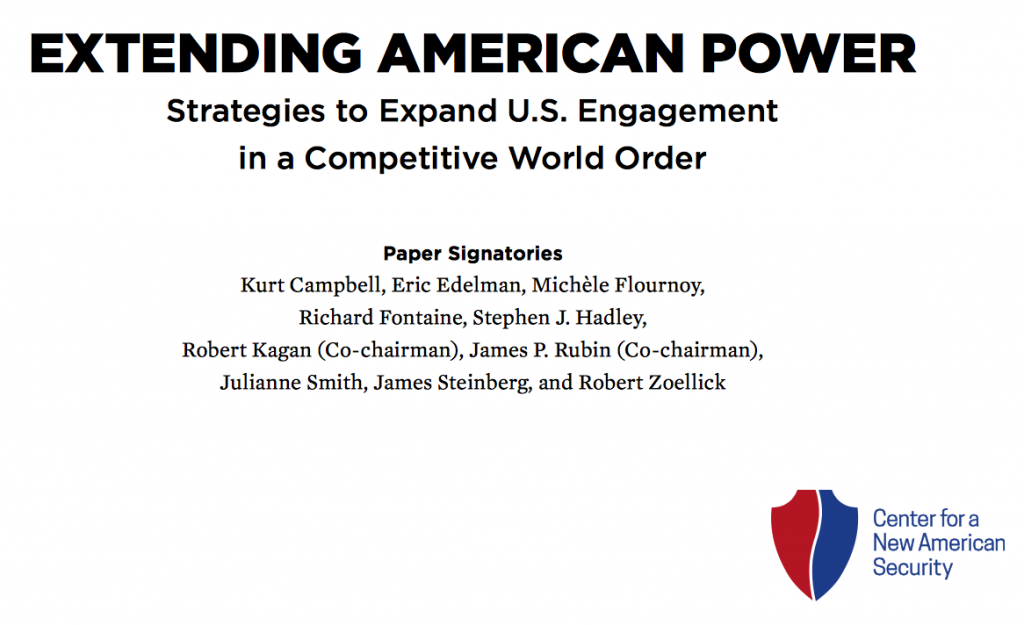The 2016 general election of the Republic of the Philippines resulted in the most widely followed electoral period in Philippine political history. Officially starting on February 9, 2016, a hodgepodge of candidates, political parties, coalitions, and electoral alliances campaigned for multiple levels of executive and legislative government positions across the officially unitary—but in practice semi-unitary—polity of the Philippines on Monday, May 9, 2016. Without question, the most watched electoral races were those for the offices of the president and vice-president.
Aside from the presidency and vice-presidency, heated contests were waged over most of the legislative seats in the bicameral Congress of the Philippines. Half of the 24 seats in the Senate—the upper chamber of the Philippine Congress—and almost 300 seats in the House of Representatives—the lower chamber of the Philippine Congress—were contested. Furthermore, the Cotabato City-based executive and legislative regional government posts of the Autonomous Region in Muslim Mindanao (ARMM)—formed by the Mindanaoan provinces of Basilan, Lanao del Sur, Maguindanao, Sulu, and Tawi-Tawi—consisting of the ARMM governorship, ARMM vice-governorship, three ARMM deputy governorships, and regional representatives in the unicameral ARMM Regional Legislative Assembly were all campaigned for.
Other local contested government offices were: the gubernatorial executive and legislative posts of governor, vice-governor, and Provincial Board legislator in the eighty-one Philippine provinces; and the country’s mayoral, vice-mayoral, and councilor offices forming the local government units for the highly urbanized component cities, independent component cities, component cities, and municipalities formed by the towns and townships of the Philippines.

The Media Centrality to 2016’s General Election
What made the 2016 election season and its campaigns unique is the integral role that the media played. The 2016 campaign period received widespread public attention and scrutiny due to the intense media coverage and the dependency of the candidates on different modes of communication and mass communication technologies, specifically the internet and social media. From the presence of the electoral candidates on social media to the mammoth advertisement campaigns they conducted and the heavy coverage provided to them by the largest news networks and newspapers in the Philippines, 2016 has been a multimodal media extravaganza par excellence for Philippine politics. From blogs, Twitter, Facebook, the online comment sections of news outlets, and public forums to community spaces and religious congregations across the Philippines, the public sphere has been abuzz. Public discussions focused on political dynasties, corruption, change, patronage, clientelism, constitutionalism, embezzlement, fraud, integrity, morality, the rule of law, and the future of the peoples of the Philippines. Despite the continued societal cynicisms about political corruption, this has led to a renewal of popular interest in Filipino politics. The supporters of all the candidates were active participants replicating the political messages and discourse(s) of those that they supported; even when campaigning was supposed to be stopped, supporters continued campaigning for their candidates on social media and in their daily exchanges.
The series of heated debates purportedly managed by the Commission on Elections (COMELEC) that Filipinos and Filipinas from all over the country watched and listened to on their televisions, radios, computers, or smart phones added greatly to the public debate(s) about who should administer the next government of the Philippines. Millions of Filipinos and Filipinas listened and watched the live broadcasts of the presidential and vice-presidential candidates debating one another. The insults and accusations that the presidential contenders—Vice-President Jejomar Cabauatan Binay (the United Nationalist Alliance candidate), Senator Miriam Defensor-Santiago (the People’s Reform Party candidate), Davao City Mayor Rodrigo Roa Duterte (the Philippine Democratic Party–People’s Power candidate and the winner of the election), Senator Mary Grace Natividad Sonora Poe Llamanzares (running as an independent), and Manuel Araneta Roxas II (the Liberal Party candidate from Wall Street and himself a secretary in President Benigno Aquino III’s cabinet until September 14, 2015)—hurled and leveled at one another during the live broadcasting captivated and enthralled Filipino and Filipina audiences from Cagayan Valley, Mimaropa and Central Visayas to Zamboanga, ARMM, and Soccsksargen. In Cebu City, the presidential candidates even delayed the debate when they began arguing backstage for approximately an hour over the rules of the debate. Eventually Mayor Duterte and Senator Poe would enter the stage, followed by Mar Roxas and Vice-President Binay; Senator Defensor-Santiago was absent due to her cancer treatment.
Symbolically choosing the three different regional groupings formed by the archipelago of the Philippines, the presidential candidates participated in three different debates, which were called the 2016 PiliPinas Debates. The first installment of the 2016 PiliPinas Debates was held at Capitol University in Cagayan de Oro, the capital of Misamis Oriental, in Mindanao on February 21, 2016. The second 2016 PiliPinas Debate was held at the University of the Philippines Cebu in Cebu City, Visayas on March 20, 2016. The last part of the 2016 PiliPinas Debates was held at the University of Pagasinan in the City of Dagupan in Luzon on April 24, 2016.
In between the second and third legs of the debates by the presidential candidates, their running-mates and vice-presidential candidates—Senator Alan Peter Schramm Cayetano (Duterte’s running-mate), Senator Francis Joseph Guevara Escudero (Poe’s running-mate), Senator Gregorio Ballesteros Honasan (Binay’s running-mate), Senator Ferdinand Romualdez Marcos (Santiago’s running-mate), Representative Maria Leonor Gerona Robredo (the running-mate of Roxas), and Senator Antonio Fuentes Trillanes IV—held their own debate at the University of San Tomas in Manila on April 10, 2016. As an added note, in the interest of full disclosure, this author was among the audience members at the University of the Philippines Cebu Performing Arts Hall during the Visayan leg of the 2016 PiliPinas Debates.
COMELEC appeared to be very hands-off in its approach to the 2016 PiliPinas Debates, instead opting to let private media enterprises do the managing. This not only highlights the important role of the media in 2016’s general election, but also the influence of private capital over state bodies and national institutions in the Philippines. Each one of the different PiliPinas Debates respectively had designated “media partners” from the major television networks and newspapers of the Philippines that played central roles in the management and organization of the debate program and its coverage. GMA Network and Philippine Daily Inquirer were responsible for the first presidential candidate debate held in Mindanao, which GMA broadcasted under its “E16: Eleksyon 2016” (E16: Election 2016) special campaign season programming. TV5, Philippine Star, and BusinessWorld were responsible for the second presidential candidate debate held in Visayas, which TV5 broadcasted as part of its “Bilang Pilipino: Boto sa Pagbabago 2016” (Count Filipino: Vote for Change 2016) campaign programming. In Luzon, CNN Philippines and BusinessMirror were responsible for the vice-presidential candidate debate, whereas ABS-CBN and Manila Bulletin were responsible for the third presidential candidate debate, which were respectively broadcasted by CNN Philippines as part of its “The Filipino Votes” special coverage, and by ABS-CBN as part of its “Halalan 2016: Ipanalo ang Pamilyang Pilipino” (Election 2016: Winning the Filipino Family) special coverage.
Red Flags: Candidates Overspent on Advertisements
During the campaign season, it was reported that the candidates in the Philippines spent sensational amounts on their advertising. It was even reported that Philippine candidates even outspent their US counterparts with regards to their campaign advertising expenditures (Cabacungan and Santos). During the period of January to November, Binay, Poe, and Roxas respectively spent 63.2 million, 63.1 million, and 70.4 million Philippine pesos per month in 2015 (Nielsen cited in ibid.). US candidates like neurosurgeon Benjamin S. Carson, billionaire businessman Donald Trump, and Senator Rafael Edward Cruz respectively spent the equivalent of approximately 33.6 million, 13.5 million and 33.6 million Philippine pesos per month in 2015, during the seven-month period of January to July, whereas Binay, Poe, and Roxas respectively spent an average of 99.4 million, 99.2 million, and 110.6 Philippine pesos per month during a period of seven months in 2015 (Ibid.; figures calculated by author using Nielsen’s dataset).
The spending contrasts between US and Philippine candidates is staggering since the US has a Gross Domestic Product (GDP) of approximately 17.42 trillion US dollar, according to 2014 statistics (World Bank), and a population of 321.77 million people in mid-2015 (UN 2015) compared to the Philippines, which had a GDP of 284.77 billion US dollars, according to the same 2014 statistics (World Bank), and a population of 100.69 million people in mid-2015 (UN 2015). Citing figures from the US Federal Election Commission to contrast the advertising expenditures of presidential campaigns in the US to the larger advertising expenditures of the candidates in the Philippines, senatorial candidate Walden Belo described this as part of the “corruption of the political process” (Cabacungan and Santos).
What is important to be cognizant about is the pre-election advertisement spending of the candidates and their attempts to circumvent electoral spending laws and COMELEC caps. COMELEC regulations stipulate that every presidential candidate may spend only 10 Philippine pesos per voting citizen. This is a total of 545 million Philippine pesos for the projected fifty-four and a half million eligible Filipino voters that can participate in the 2016 general-election. COMELEC’s spending restrictions are mandated by Article 9, Section 2(7) of the 1987 Constitution of the Philippines to “ensure the enforcement of the fair-and-equal exposure rule for political parties and their candidates” and to prevent “a strong party or candidate from taking undue advantage of the weakness of others” (De Leon 2005:299).
In an attempt to circumvent COMELEC’s spending cap, according to Nielsen Media (as cited by Mangahas et al.), many politicians and parties ran “social concern” advertisements, which cost 7.75 billion Philippine pesos, from the period running from January 1, 2015 to January 31, 2016. The advertisements were aired during prime time on Filipino television and during the timeslots of the country’s most popular programs; 86.7 percent of these advertisements (accounting for 6.7 billion Philippine pesos) featured the candidates that would run in the general-election (Ibid.). Despite their pledges against corruption, many of these candidates disregarded the law with impunity before they even got sworn into office. Binay, Poe, and Roxas all spent approximately 1 billion Philippine pesos on their presidential campaign advertisements. According to the Philippine Center for Investigative Journalism, “even the more affluent” candidate should have become bankrupt because of the costs of their pre-campaign advertisements (Mangahas).
It is worth quoting the inference that Senator Defensor-Santiago made when she heard that her rivals had spent over one billion Philippine pesos in 2015 for their presidential bids before they were even legally allowed to begin their advertising campaigns. She rhetorically asked how these politicians paid for the scandalous amounts of their advertisements, especially since whoever becomes the president of the Philippines will make only 120,000 Philippine pesos a month (or 8.64 million in their six-year term). She then answered her own question for voters. “The simple answer is that they will steal from public funds, or will at least be tempted to do so. An alternative would be to give favors to rich contributors, to the detriment of public interest,” she reacted (Adel).
Although the regulations of COMELEC, which has been described as “a haven for fixers who deliver fictitious votes to the moneyed and the powerful” (Quimpo 2009:348), have been violated, COMELEC has not taken any substantive action. Unfortunately, this is business as usual in the Philippines. As the communications scholar Campbell (2002) points out, the Philippines is a place that is known for ineffective regulatory institutions and controls. Like most the other members of the Association of Southeast Asian Nations (ASEAN), either on their own or collectively as a regional bloc, in the Philippines there is a major gap between declarations and regulations, on the one hand, and performance and implementation, on the other (Roberts 2012).
Electoral Irregularities and Abuses
During voting day there were multiple irregularities, abuses, and infringements. Ahead of the voting on May 9, it is widely known that the governing Liberal Party distributed money to buy votes. The same behavior was replicated with the country’s civil servants by the Liberal Party when government workers were given pay for a “fourteenth month” as a form of enticement to vote for Mar Roxas and the Liberal Party’s other candidates.
At the polls, the names of many voters were missing from the voting lists, while other voters were oddly moved from one voting cluster to another without explanation by COMELEC, which may possibly be part of an attempt to redistribute voters in a de facto form of gerrymandering. The names of dead people were included in the voting lists of different precincts, such as in Manila. The former ambassador of the Philippines to the United Arab Emirates Roy Villareal Señeres—the presidential candidate that died in the hospital on February 8, 2016, just three days before withdrawing his bid for the presidency on February 5, 2016—was kept on the ballots by COMELEC and got at least 22,726 votes by the time the ballots in approximately 87 percent of the precincts had been counted, according to report by Rappler published on May 10, 2016.
Procedural rules were not followed on voting day. As observed by the author in Central Visayas, the polling clerks did not check the identification cards of voters. Candidates did not even stop their campaigning as COMELEC required them to do one day before the vote on May 8, 2016. The voting cards that the candidates distributed to voters had political advertising that, if not outright, in spirit violated the COMELEC regulations requiring politicians to end their campaigning. While on average 33.7 percent or one-third of registered voters in the Philippines will not vote or will never be able to vote (Panao 2016:2), even worse, many Filipinos and Filipinas were disenfranchised from voting because they could not access voting stations or pay for government documents, which they need to register for voting.
Media Filters: Constructing and Framing Philippine Electoral Issues
The media has played an important role in framing the direction and discourse of the election campaigns. It not only has the power to inform voters, but it can mislead and distract voters, which makes it important to material processes (physical action). Media organizations and those operating them directly as owners and managers, or indirectly as sponsors and sources of funding, decide which voices will be ignored, reported, exposed, and given importance. In this respect, the media can function as a filter and inform and distort the perception(s) of voters. This means that the media is not only being constructed, but helping construct the opinions of voters. This process is largely based on the stance of the media, which is based on political and social attitudes and the beliefs of media ownership and those reporting and producing the information that people consume.
Philippine society’s most important issues went largely ignored or have been under-reported by Philippine media. In the process, the 2016 general election was transformed—if not in whole, then in part—into an entertaining circus. The policy platforms of the presidential and vice-presidential candidates were largely overlooked and disregarded by the media, albeit the candidates were mostly indistinguishable from one another in their political platforms and agendas (or absence thereof); the main Philippine political parties “are built around personalities, rather than around” platforms, and “ideologies and platforms are just adornments for them” (Quimpo 2007:277). Laying testimony to this were the cross-cutting electoral alliances that were exhibited by posters of Liberal Party candidates alongside Duterte, such as Cebu City’s Liberal Party mayoral candidate Tomas de la Rama Osmeña.
Trying to compensate for the missing substance, the media focused instead on the personal attacks of the candidates directed against one another’s characters, albeit the candidates themselves in general neither focused on analyzing the shortcomings of one another’s policies nor presented any real policies of their own in their campaign advertisements. Because of this, the presidential and vice-presidential election campaigns largely became daily doses of television dramas or, as they are more popularly called by Filipinos and Filipinas, Pinoy telenovelas and teleseryes.
Aside from the consistent barrage of controversial performances by former professional boxer Emmanuel Dapidran Pacquiao and Rodrigo Duterte—dubbed as the “Filipino Donald Trump” because of his heated comments during the elections that paralleled those of Donald Trump (Yap and Lopez; Thomas)—and the continuous revelations of corruption among the different candidates, the saga behind Grace Poe’s eligibility was a key focus of the media.
Just as Mar Roxas began courting Grace Poe on the last days of the campaign, Vice-President Binay and his camp tried to court Poe in the heydays of the 2016 general-election. When Senator Poe and Binay did not make any agreement in 2015, Poe’s problems about her residency and citizenship began when United Nationalist Alliance Representative Tobias Tiangco challenged her eligibility for the presidency. Questions about Poe being able to meet the ten-year residency qualification for the presidency were all over the news.
Poe was forced to go on the defensive and get a team of lawyers to defend her. According to Senator Poe, she denounced her Filipina citizenship on October 18, 2001 for a US citizenship. She would then become a citizen of the Philippines again on July 7, 2006, but would continue to enter and leave the Philippines with a US passport until she finally bothered to get her Philippine passport on October 13, 2009 (Rufo). After an electoral campaign for the Senate, Poe then renounced her US citizenship when she took office on October 21, 2010. After a stretched out drama, the Senate Electoral Tribunal and Supreme Court of the Philippines would eventually rule in her favor, allowing her to campaign for the presidency.
Disregarded and Overlooked Issues
The continued land struggle in the Philippines was largely absent from the political discourse at the top. This struggle between the wealthy land-owning economic oligarchs—mostly the descendents of the ilustrados (Mestizo landowners) that collaborated with the US when it invaded and occupied the Philippines (Reid 2007:1007)—and their development companies, on one side, and, on the other side, substantially larger strata of Philippine society—ranging from farmers in rural areas to squatters and low-income laborers in the country’s expanding urban environs—at best received lip service during the elections. Philippine farmers and citizens in poor neighborhoods in the country’s urban hubs frequently face threats, acts of violence, and appropriation of their property. They have become destitute, having their homes demolished, and their livelihood lost. As the country’s agricultural base is eroded, social inequality grows, and social unrest is fuelled by policies of marginalization, in the long-term this will have severe consequences for the economic health and political stability of the Philippines. This trend is epitomized by the tragic deaths and injuries of the farmers in Kidapawan that gathered to protest a lack of governmental assistance from North Cotabato on March 30, 2016. More of this can be expected in the future as desperation grows among the farmers, the urban and rural land struggles inside the Philippines intensify, and socio-economic disparity escalates.
No serious critique or analysis about the economic path of the Philippines was presented either by the vast majority of candidates. According to Japanese financial holdings company Nomura, the dependence of the Philippine economy on remittance from Filipinos and Filipinas working overseas has increased (de Vera). There is also the issue of Foreign Direct Investment (FDI); the increased FDI in the Philippines has simplistically been presented as an indicator of economic growth without any mention of the larger returns and outflows that are expected from the FDIs.
Additionally, largely missing from the political discourse was the subject of the dispute in the South China Sea or, as it is called in the Philippines, the West Philippine Sea and what the ramifications of an escalation of the dispute with Beijing would mean for the Philippines. The winners of the general-elections will have to work with Washington in a time where there is increasing tensions between the US and the People’s Republic of China. The US has a major interest in using the dispute in the South China Sea/West Philippine Sea to justify its so-called “Pivot to the Asia-Pacific” and to isolate Beijing. This could entangle the Philippines in a wrestling match between China and the US. Despite the importance of the subject, there has been little critical coverage about the territorial dispute in the South China Sea/West Philippine Sea and the only politician who publicly admitted that he went to talk about the issue with the US Embassy in Manila was Rodrigo Duterte (Ramirez).
Duterte’s Winning Discourse: Tough on Crime, Anti-Corruption, and Federalism
Instead of addressing serious issues in a direct manner, the politics of blame were used. In this context, the 2016 election season saw a large and frustrated portion of the lower strata of Philippine society unite under the banner of Rodrigo Duterte and his anti-corruption and anti-crime discourse that pledged to be hard on crime and to challenge “Imperial Manila” as the parasitic political center of the Philippines. “What he lacks in policymaking interest or experience he made up for during the campaign with the showmanship that had been absent from national politics. ‘Many Filipinos loved it,’” was how an Economist article described Duterte after his victory.
During the campaigning, Duterte became a conceptual representation (Kress and van Leewen 1996), who no longer was viewed in terms of his actions, but in terms of a representation of the frustrated lower strata of the Philippines. This reached the point where support for Duterte transcended local political loyalties in much of the Philippines; for example, in the Camotes Islands, the resident Liberal Party candidates were elected locally while most the population supported Duterte for the presidency. Even the Roman Catholic Church’s opposition to Duterte or the last minute reports about the billions of Philippine pesos in his shared Bank of the Philippine Islands (BPI) account with his daughter Sara Duterte-Carpio or the YouTube video released by Kilab Multimedia showing Duterte indulgingly speaking to Jose Maria Canlas Sison—the Netherlands-based exiled founder of the Communist Party of the Philippines—over an internet video chat failed to undermine him.
Analyzing the semiotics behind Duterte’s campaigning, the fist it used represents the symbol of the strongman that he represents and his overtly tough on crime position. His anti-corruption and anti-crime discourse, however, falls short of addressing the dilemmas of the Philippines; it is mostly populist rhetoric. Duterte’s campaign failed to address the roots of the problem or even to articulate a clear policy agenda. His rhetoric was also contrary: while Duterte pledged to make the rule of law supreme in the Philippines, he paradoxically disclosed that he intended to do so by working outside of the rule of law.
Duterte’s federalist discourse and demands need further critical analyses. The idea of federalism put hand-in-hand with the Duterte transitional team’s announcements that his administration intends to increase FDI in the Philippines should not be overlooked. Mixing the two together can be a lethal economic cocktail. According to a Philippine Daily Inquirer post-election report (published on May 13, 2016), after winning the election, Duterte said he will increase FDI by removing the protective constitutional barriers that prevent foreign ownership or foreign-owned shares above a figure of 40 percent for nationally important and strategic sectors, such as in telecommunications, aviation, pharmaceuticals, and domestic shipping. Along with federalism, this could equate to the fracturing, de-regulating, and auctioning of the economy by the provincial oligarchs.
Philippine Media as an Accessory to Corruption?
In Bocaue, Bulacan, coin tossing was used to break an electoral tie and decide who becomes mayor. The coin tossing in Bocaue meant that the election results for mayor were ultimately decided by chance, which is an act that can strongly be said to emasculate voting. It was justified, however, by a proviso in Philippine law. This event epitomizes the nature and contradictions of the 2016 general-elections, where undemocratic political traditions have been positioned within a democratic political framework, just like how political dynasties have used political parties and lists to safeguard their interests in a system of non-substantive democracy filled with illusions of democracy that are sustained by democratic rituals that are void of authenticity.
In the last few years the Philippines has increasingly been described as “a patrimonial oligarchic state, a weak state preyed upon and plundered by different factions of the elite, who take advantage of, and extract privilege from, a largely incoherent bureaucracy” (Paul Hutchcroft cited by Quimpo 2007:282) According, to Hutchcroft, “it is not just one person and his/her cronies but the oligarchic elite as a whole that engages in plunder” in the Philippines (Ibid.). Others apply the predatory state description of Peter Evans (cited by Quimpo 2009:337) to the Philippines, which describe the Philippines as a state that “preys on its citizenry, terrorizing them, despoiling their common patrimony, and providing little in the way of services in return.” Others, like Quimpo (Ibid.), began defining the Philippines as a predatory regime under the administration of President Gloria Macapagal Arroyo. This trend has not reversed and instead it has been facilitated by the Philippine media’s pattern(s) of reporting.
The foundations of good governance in a society are established on the abilities of its voters to hold elected officials accountable. One of the tools for this is the media. Analyzing the vocabulary chains used in the 2016 general-election, economic development and fighting corruption were major themes of the different candidates. There were, however, no substantial explanations about how this would be done, which largely means that the discourse was predominately lip service and rhetoric. In many cases the media reported passively about this with declarative reporting that did not probe deeper or challenge the candidates to clarify how exactly they intended to do the things that they promised.
Discourse is much more important in the Philippines and the rest of the world than it was during the past. According to Norman Fairclough (2004:104), “language may have a more significant role in contemporary” sociological, economic, and political developments “than it had had in the past.” In this context, the Philippine media is supposed to play a role in informing citizens, but instead it has largely been involved in sensationalist reporting and the dramatization of Filipino politics as Pinoy telenovelas. By ignoring serious newsworthy issues and refusing to probe deeper into important questions, this pattern of reporting has largely helped keep the oligarchs of the Philippines in power and aided corruption and political malfeasance.
Works Cited
“An election in the Philippines: The dangers of Duterte Harry.” 14 May 2016. Economist. Accessed on 16 May 2016: <http://www.economist.com/news/leaders/21698648-return-bad-old-ways-under-rodrigo-duterte-dangers-duterte-harry>.
Adel, Rosette. 10 January 2016. “Miriam: Candidates’ ad overspending ‘red flag for corruption.’” Philippine Star. Accessed on 1 April 2016: <http://www.philstar.com/headlines/2016/01/10/1541192/miriam-candidates-ad-overspending-red-flag-corruption>.
de Vera, Ben. 26 February 2016. “Faster remittance growth seen in 2016.” Philippine Daily Inquirer. Accessed on 13 May 2015: <http://business.inquirer.net/207466/faster-remittance-growth-seen-in-2016#ixzz40xnZNoVZ>.
Cabacungan, Gil C., and Tina G. Santos. 7 January 2016. “PH presidential candidates outspend billionaire Trump.” Philippine Daily Inquirer. Accessed on 16 May 2016: <http://newsinfo.inquirer.net/753234/ph-presidential-candidates-outspend-billionaire-trump>.
Campbell, Consuelo. 2002. “Private and State Ownership in Telecommunications: A Comparative Analysis of São Paulo, Brazil and Manila, Philippines.” Gazette: The International Journal for Communication Studies 64(4):371-383.
De Leon, Hector S. 2005. Textbook on the Philippine Constitution. 8th ed. Quezon City: Rex Printing Company.
“Despite his death, Roy Señeres picks up presidential votes.” Rappler. May 10, 2016. Accessed on 10 May 2016: <http://www.rappler.com/nation/politics/elections/2016/132506-roy-seneres-presidential-votes >.
“Duterte team unveils 8-point economic plan.” 13 May 2016. Philippine Daily Inquirer. A1+
Fairclough, Norman. 2004. “Critical Discourse Analysis in Researching Language in the New Capitalism: Overdetermination, Transdiscpinarity and Textual Analysis.” Pp.103-122 in Systemic Functional Linguistics and Critical Discourse Analysis: Studies in Social Change. Lynne Young and Claire Harrison, eds. NYC: Continuum.
Kress, Gunther and Theo Leeuwan. 1996. Reading Images: The Grammar of Visual Design. London, UK: Routledge.
Mangahas, Malou. 9 March 2016. “Net worth vs P6.7-B pol ads bill: Top bets in debt, deficit spending?” Philippine Star. Accessed on 16 May 2016: <http://www.philstar.com/headlines/2016/03/09/1561207/net-worth-vs-p6.7-b-pol-ads-bill-top-bets-debt-deficit-spending>.
Mangahas, Malou, et al. 7 March 2016. “Pre-Campaign Ads: P6.7B. Bribery, tax evasion, impunity?” Philippine Center for Investigative Journalism. Accessed on 1 April 2016: <http://pcij.org/stories/bribery-tax-evasion-impunity/>.
Quimpo, Nathan Gilbert. 2007. “The Philippines: Political Parties and Corruption.” Southeast Asian Affairs 2007:277-294.
Quimpo, Nathan Gilbert. 2009. “The Philippines: predatory regime, growing authoritarian features.” The Pacific Review 22(3):335–353
Panao, Rogelio Alicor L. 2016. University of the Philippines Forum 17(1):1-2.
Ramirez, Robertzon. 8 March 2016. “Duterte to meet with US embassy officials.” Philippine Star. Accessed on 1 May 2016: <http://www.philstar.com/headlines/2016/03/08/1560733/duterte-meet-us-embassy-officials>.
Reid, Ben. 2006. “Historical Blocs and Democratic Impasse in the Philippines: 20 years after ‘people power.’” Third World Quarterly 27(6):1003-1020.
Roberts, Christopher B. 2002. ASEAN Regionalism: Cooperation, Values, and Institutionalization. London, UK: Routledge.
Rufo, Aries. 13 July 2015. “Grace Poe and Pandora’s box: Legal issues in her candidacy.” Rappler. Accessed on 12 April 2016: <http://www.rappler.com/newsbreak/in-depth/99144-grace-poe-pandora-box-legal-issues-presidency>.
Thomas, Sylvia. 6 May 2016. “Rodrigo Duterte, the Filipino Donald Trump, favoured to win presidential race.” CBC News. Access 6 May 2016: <http://www.cbc.ca/news/world/rodrigo-duterte-philippines-1.3566738>.
United Nations Department of Economic and Social Affairs. 2015. World Population 2015. NYC: United Nations Publications.
World Bank. n.d. “GDP at market prices (current US$).” Accessed on 27 April 2016: <http://data.worldbank.org/indicator/NY.GDP.MKTP.CD>.
Yap, Karl Lester M., and Ditas B Lopez. 25 April 2016. “Duterte Widens Lead in Philippines Race Despite Rape Comment.” Bloomberg. Accessed 6 May 2016: <http://www.bloomberg.com/news/articles/2016-04-25/duterte-widens-lead-in-philippines-race-despite-rape-comments>.




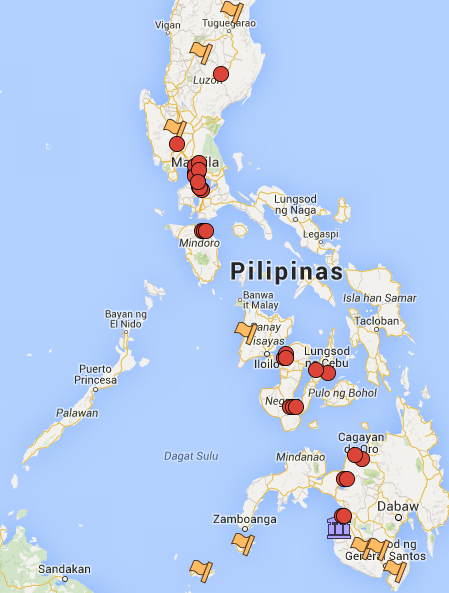
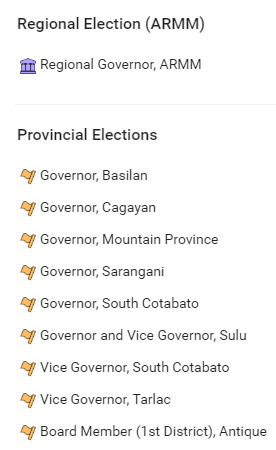










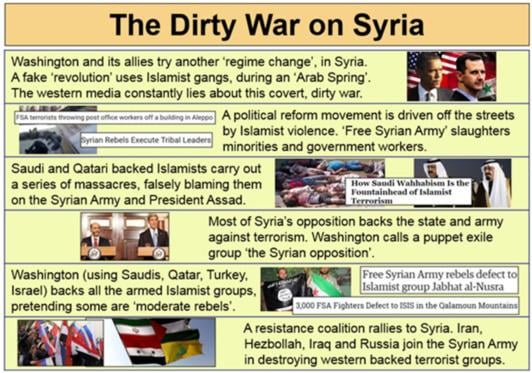











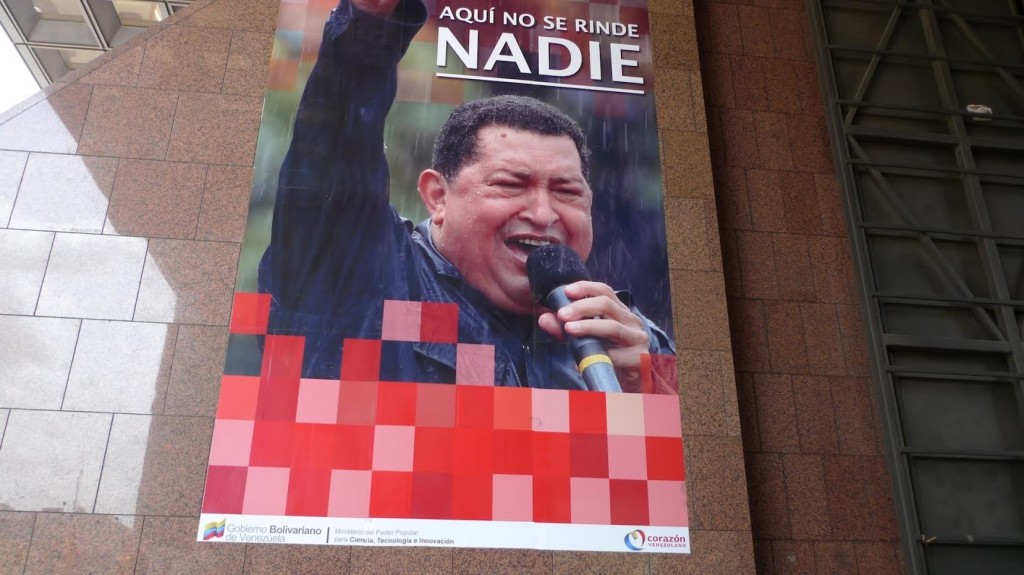













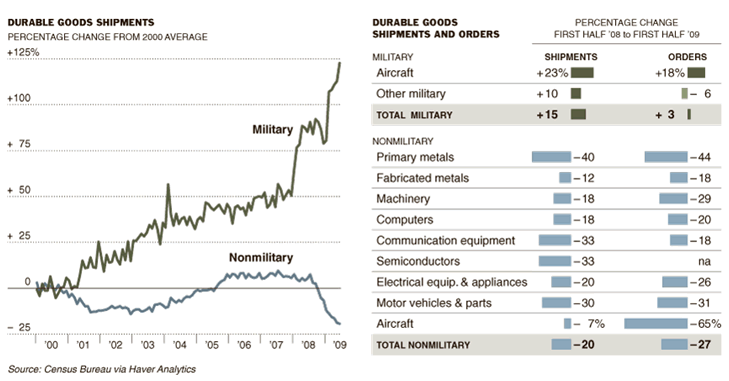


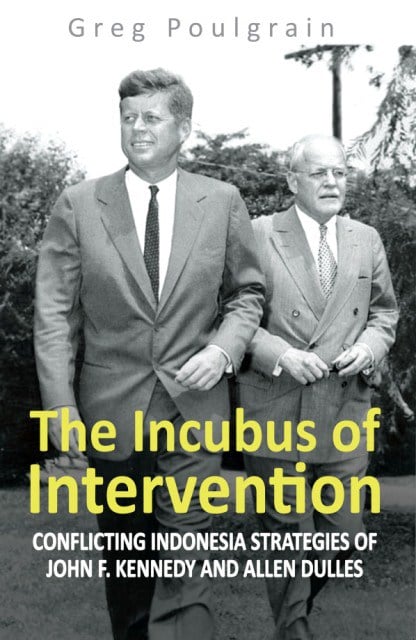





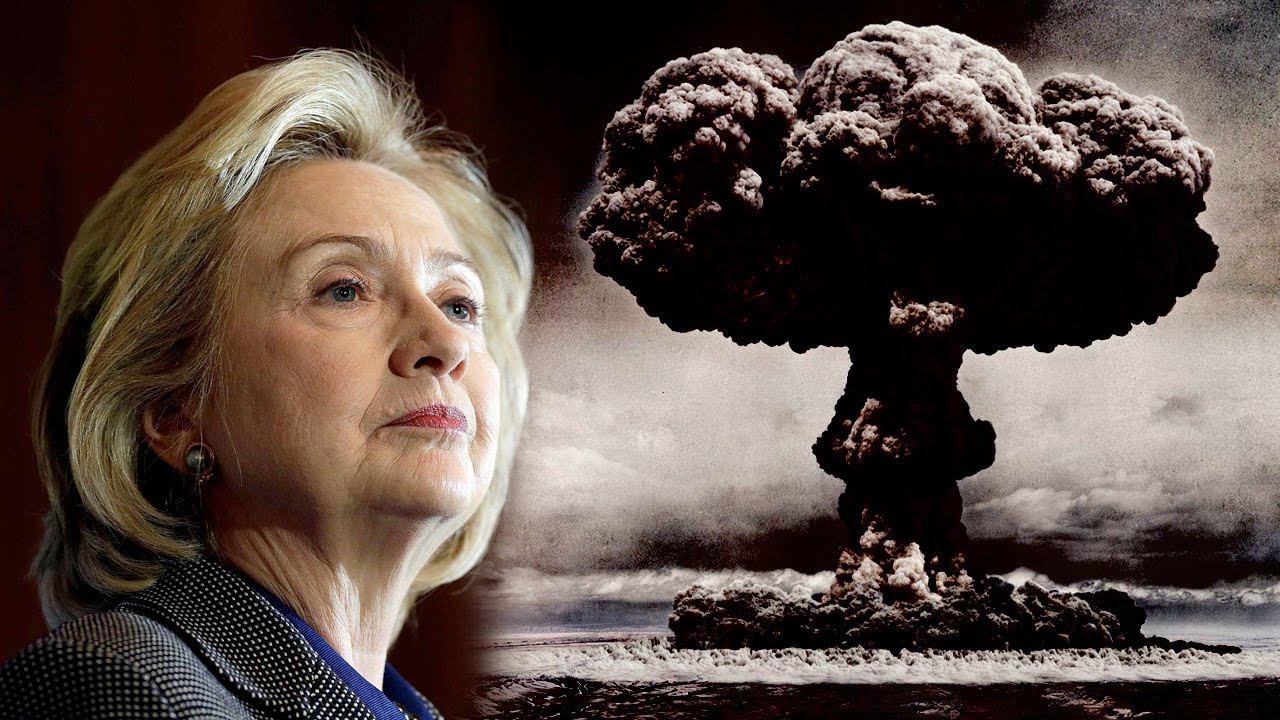

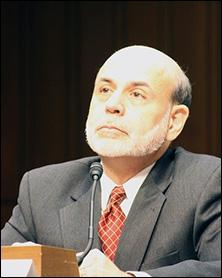 …Focusing for the moment on LB’s [Lehman Brothers] vulnerable tri-party borrowings, as of July 14 it was financing $200 billion of collateral. Of that amount, all but $12.8 billion was PDCF-eligible [PDCF was an emergency loan program set up by the Fed]. Of the non-PDCF-eligible, $8.7 billion was equities. JPMC [JPMorgan Chase], LB’s clearing bank, is likely to be the first to realize that the money funds and other investors that provide tri-party financing to LB are pulling back significantly. If some morning it fears that the investors are unlikely to roll their repos, it may threaten not to unwind LB’s previous night’s repos. If it did that, LB would be done because the tri-party investors would control its securities inventory. The investors presumably would promptly liquidate the $200 billion of collateral and there is a good chance that investors would lose confidence in the tri-party mechanism and pull back from funding other dealers. Fear of those consequences is, of course, why we facilitated Bear’s acquisition by JPMC. We could try to dissuade JPMC from refusing to unwind by pointing out that if the investors don’t roll the repos LB can borrow from us through the PDCF. Even if we did so, for two reasons JPMC might still balk. The first is the non-PDCF collateral. We could address that concern by making the equities and other non-PDCF collateral eligible. Or we could try to get LB to wire $12.8 billion of cash into JPMC to cover the rollover risk. The other reason is a fear that LB could be placed in bankruptcy intra-day, before the next day’s tri-party repos and any PDCF loans are settled, in which case JPMC would be stuck with $200 billion in secured loans to LB. I’m not sure that this is at all likely, but JPMC and BNYM [Bank of New York Mellon] are sufficiently concerned that they have arranged a meeting Monday afternoon with SIPC [Securities Investor Protection Corporation that insures brokerage accounts]. (LB’s PD [Primary Dealer] is a SIPC member (as are some but not all of the other PDs) and its bankruptcy would be administered by SIPC.) Board staff plan to sit in on this meeting. But even if we are willing to extend as much as $200 billion of financing to LB, absent an acquirer our action would not ensure LB’s survival… [Information in [ ] brackets has been inserted by Wall Street On Parade.]
…Focusing for the moment on LB’s [Lehman Brothers] vulnerable tri-party borrowings, as of July 14 it was financing $200 billion of collateral. Of that amount, all but $12.8 billion was PDCF-eligible [PDCF was an emergency loan program set up by the Fed]. Of the non-PDCF-eligible, $8.7 billion was equities. JPMC [JPMorgan Chase], LB’s clearing bank, is likely to be the first to realize that the money funds and other investors that provide tri-party financing to LB are pulling back significantly. If some morning it fears that the investors are unlikely to roll their repos, it may threaten not to unwind LB’s previous night’s repos. If it did that, LB would be done because the tri-party investors would control its securities inventory. The investors presumably would promptly liquidate the $200 billion of collateral and there is a good chance that investors would lose confidence in the tri-party mechanism and pull back from funding other dealers. Fear of those consequences is, of course, why we facilitated Bear’s acquisition by JPMC. We could try to dissuade JPMC from refusing to unwind by pointing out that if the investors don’t roll the repos LB can borrow from us through the PDCF. Even if we did so, for two reasons JPMC might still balk. The first is the non-PDCF collateral. We could address that concern by making the equities and other non-PDCF collateral eligible. Or we could try to get LB to wire $12.8 billion of cash into JPMC to cover the rollover risk. The other reason is a fear that LB could be placed in bankruptcy intra-day, before the next day’s tri-party repos and any PDCF loans are settled, in which case JPMC would be stuck with $200 billion in secured loans to LB. I’m not sure that this is at all likely, but JPMC and BNYM [Bank of New York Mellon] are sufficiently concerned that they have arranged a meeting Monday afternoon with SIPC [Securities Investor Protection Corporation that insures brokerage accounts]. (LB’s PD [Primary Dealer] is a SIPC member (as are some but not all of the other PDs) and its bankruptcy would be administered by SIPC.) Board staff plan to sit in on this meeting. But even if we are willing to extend as much as $200 billion of financing to LB, absent an acquirer our action would not ensure LB’s survival… [Information in [ ] brackets has been inserted by Wall Street On Parade.]
